More than two years ago, Robert 'Noddy' Knott and I were enjoying a meal when the conversation turned to the disparity between the current arboricultural legislation and training and what was actually going on in the working environment. No legitimate UK training scheme that we knew of was teaching any of the modern doubled rope (or moving rope system) techniques or any of the up-to-date stationary rope work positioning (or single rope system) techniques, yet climbers were using them on a daily basis. This raised some serious questions about our industry.
The way in which tree climbers operate is very different to rope access or rock climbing, and yet we have been using techniques borrowed from these areas for many years. We concluded that some serious research and testing were needed with regard to the safety (and hopefully legitimisation) of these newer techniques and systems. Further discussions led to a consultation with Chris Cooper-Abbs (author of the Industry Code of Practice: Tree Work at Height); a proposal was made to the Arb Association and the Education and Training Committee awarded us a research grant.
We set out hoping to appraise the stationary rope work positioning (SRWP) techniques and equipment commonly used within the United Kingdom arboricultural industry with regard to their relationship and relevance to legislation, good practice and EU equipment test standards.
In order to do that we aim to achieve the following objectives:
- To research the equipment currently being used by SRWP climbers and how it is applied in the workplace.
- To analyse the relationship between tools and techniques used and the UK framework of legislation and good practice.
- To gain understanding of the forces experienced in both SRWP practices and what the equipment may be subject to.
- To compare the forces the equipment is subject to against commonly accepted EU PPE test standards.
- To assess whether equipment application matches the currently accepted test criteria and manufacturers' recommendations for use.
These objectives will hopefully result in the following outcomes:
- Develop a broader understanding of the extent of SRWP use within the UK arb industry.
- Provide an assessment of the applicability of SRWP to current UK good practice.
- Assess whether equipment used in SRWP meets current EU standards and whether equipment or standards require an update to meet our legislative framework.
- Instigate a review of how SRWP may be dovetailed into an updated guide to good climbing practice and/or technical guide.
Many of these aims and objectives have been completed already or we have developed a very good grasp of them, having collated information gained from questionnaires about the fundamental issues and carried out days of research with groups of prominent SRWP climbers in the south of England. We can safely say that using current good practices, and if appropriate training and awareness are there, climbing SRWP shouldn't be any less safe than more traditional techniques. However, the more knowledge and data we have, the better. As such, we are aiming to complete the following tests, in addition to using the knowledge we have from previous studies.
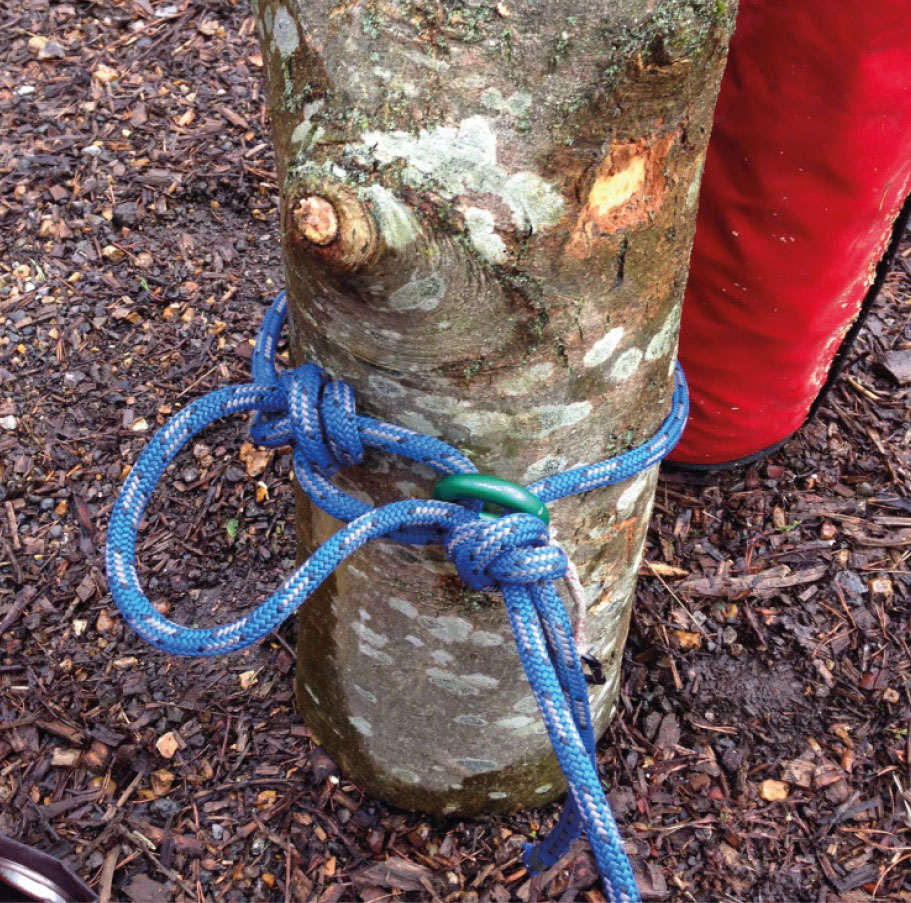
A base tie, with an anchor ring and a double overhand to aid staying clinched on the stem.
These tests were decided upon based on the data collected from the people who responded to the questionnaire and those who were present during the group testing day. (Pictures of some of these systems, anchors and configurations can be seen on these pages.) The playing field has changed slightly since those initial plans for a number of reasons, such as any possible implications of Brexit and the CE certification of the ISC Singing Tree Rope Wrench and tether combination.
Nonetheless, at our testing stage, all configurations will be tested on an anchor pin 7-10cm in diameter in order to best simulate a realistic, sensibly sized anchor point. The configurations will be static load tested to 15kn/3mins, and then loaded to failure.
Base tie tests will require 13m of rope each:
- running bowline with figure 8 or yosemite finish
- running bowline and alpine butterfly above
- running bowline/alpine with anchor ring to prevent rope on rope friction
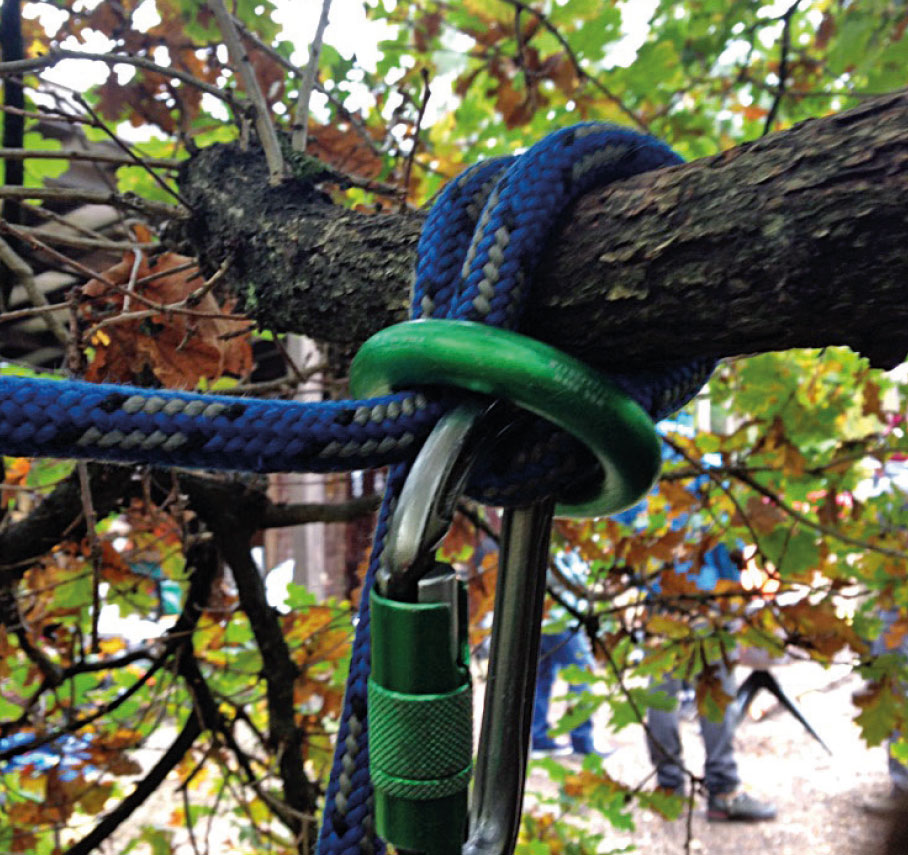
A redirected formed with the climbing rope and a carabiner jamming on the anchor ring.
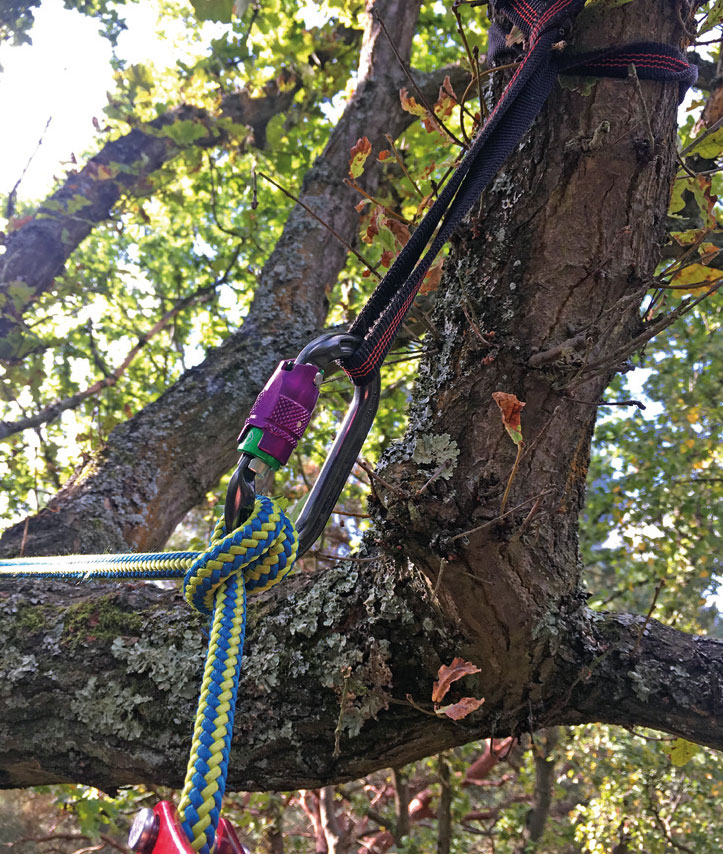
A redirect using a nylon tape sling, DMM durolock carabiner and a clove hitch with the climbing rope.
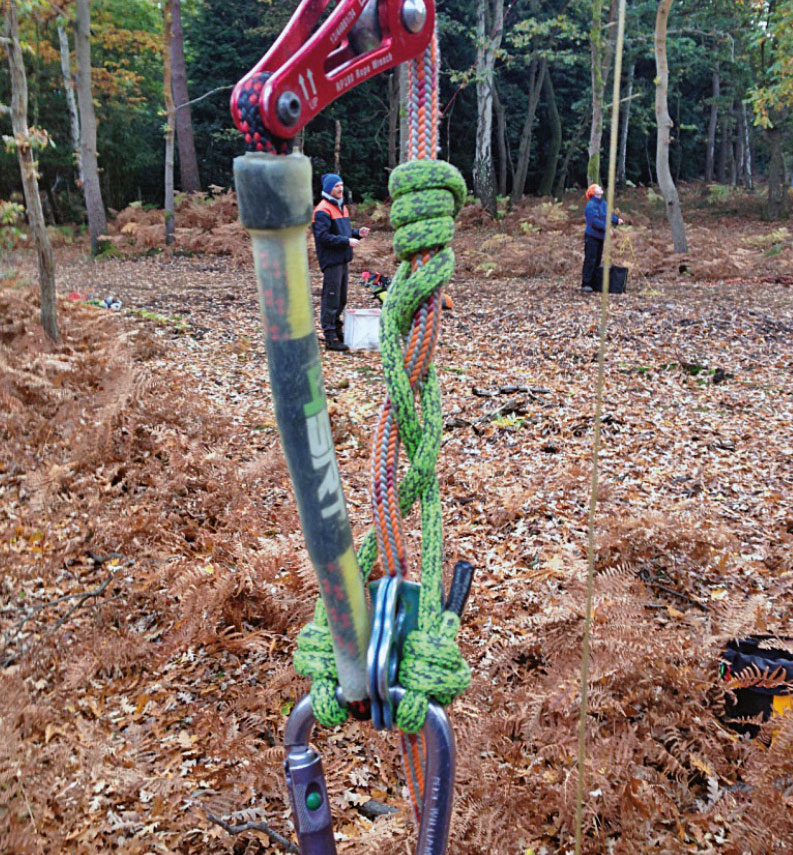
A rope wrench system formed from a selection of suitable compatible components.
Top ties should only require around Sm of rope each:
- running bowline
- running alpine
- pinto anchor using an alpine butterfly knot and an oval carabiner
- alpine butterfly and large ring with working side of the line running through the ring - bunny alpine + large ring
- external girthed alpine + large ring
- alpine butterfly and maillon
- bunny alpine maillon (8mm delta maillon)
- knot block cambium saver with alpine butterfly
- knot block c/s bunny alpine
- knot block c/s daisy chain
- knot block c/s figure of 9 on a bight
- ring cinch knot block with DMM 34mm ring
- alpine butterfly
- bunny alpine
- daisy chain
Redirects will be tested with the aim of determining the strength of the connecting knot by using a strong sling in basket with a steel carabiner (rope locked off behind) and Sm of rope for each test in the following combinations:
- alpine butterfly
- clove hitch
- girth/larksfoot hitch
- munter/italian hitch
- 2 wraps around the carabiner
Redirect materials are to be tested in choke and/or basket. Hardware steel: Sm rope for each:
- Prussic loop 8/10mm (using the strongest connecting knot from previous test)
- Simarghu Imp in standard configuration
- carabiner ring block (34mm DMM anchor ring) – bight of rope through ring around anchor and back into ring, locking with carabiner
- nylon/Dyneema webbing sling (using the strongest connecting knot from previous test)
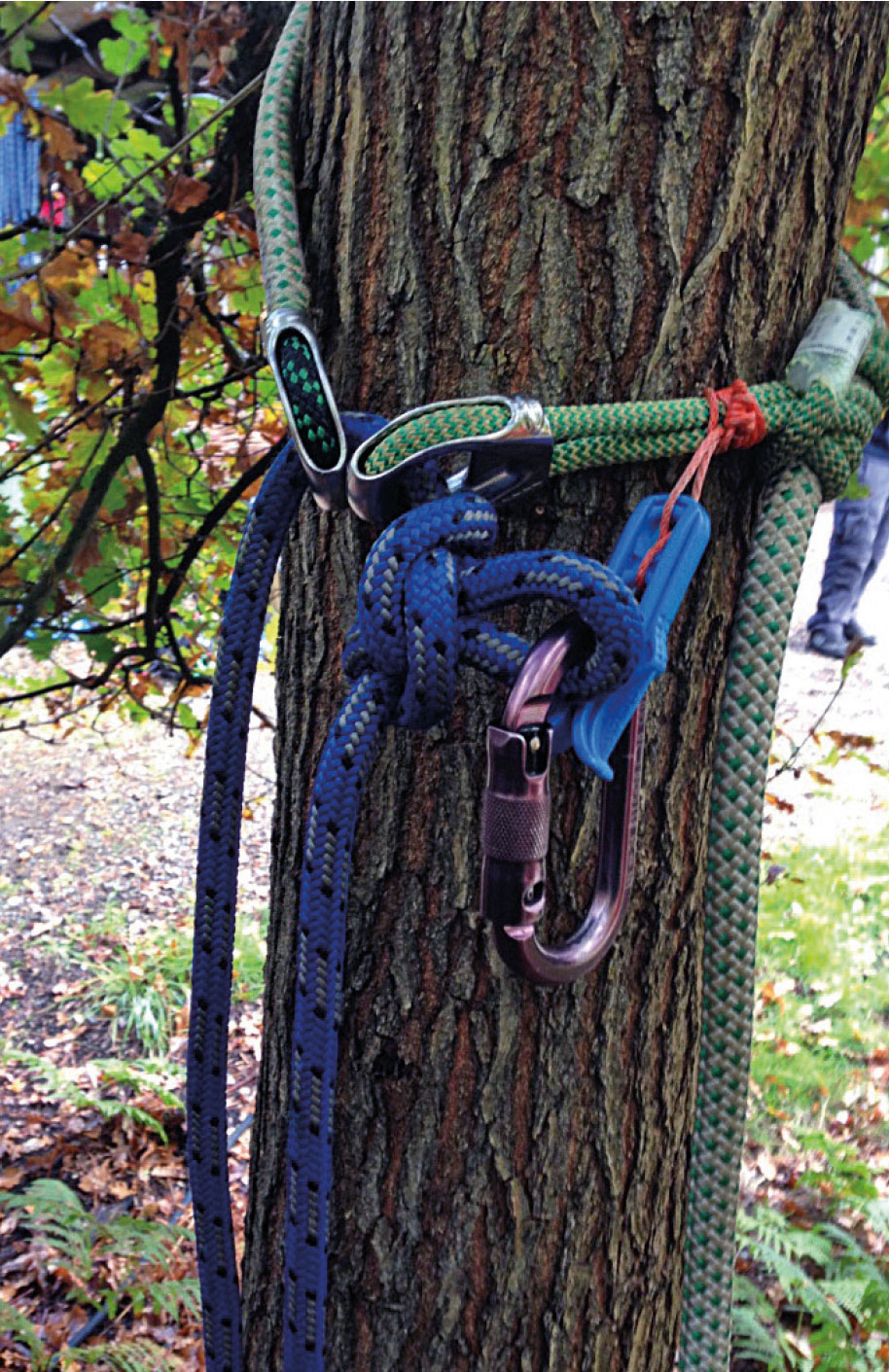
A top anchor formed with a cambium saver, knot blocking on the small ring. A configuration aid is used to stop the knot dropping away from the small ring if the system goes slack.
A carabiner shape and load proportion test, between hitch and rope wrench, will be conducted, aiming to get a grip on how much friction/load the wrench accounts for depending on rope diameter. How soon will the hitch slip depending on hitches etc.?
Pull tests will be carried out on rope wrench set-ups using a Hitchclimber/ISC swing cheek on an oval and an HMS (components left to right):
- tether, hitch, HC pulley, hitch
- hitch, tether, HC pulley, hitch
- hitch, HC pulley, tether, hitch
- hitch, HC pulley, hitch, tether
- ISC swing cheek wrench set-up with an oval and an HMS
We have also conducted our own tests climbing around trees with common SRWP techniques using load cells at anchors and redirects to gain a greater understanding of the forces (on the trees, body and equipment) involved.
Naturally, all of this equipment and the testing facilities come at a price, and it seems it may be difficult to complete the project to the extent originally desired. Nevertheless, we are hoping for extra support and/or a donation of equipment from suppliers (in addition to that already kindly supplied by ISC) and access to a testing rig with Marlow Ropes. With a little more financial support, we look forward to the publication of findings that are pertinent to the entire UK arboricultural industry. They will be especially useful for employers and climbers who want to be as productive and safe as possible with the new techniques and equipment.
If you feel you would like to support this project please contact us at: benfrose@gmail.com or info@treeworker.co.uk
Article taken form Issue 183 of The ARB Magazine. Members can view their copy here.